In the March-April 2014 issue, IAEI published an article entitled, “Maintaining a Safe and Reliable Electrical System. One of our members lodged his adamant concerns when he read the article. His concerns centered around electrical connections that could be installed and concealed in wall cavities without being accessible and terminating in a box. As he stated, “This flies in the face of everything I was ever taught as an electrical apprentice and is a really bad idea!” Rarely have I received a more passionate and emotional response from someone regarding a particular code installation.

Unknown to the casual observer, an NM cable was damaged while installing a nail to hang this picture. The repair work has been completed. In the future, how important is it to know where the splicing device is located within the wall space? Photo by Joseph Wages, Jr.
I tend to agree that this is typically not permitted per 300.15 of the National Electric Code. There are several level-one list items found in (A) through (L) which allow deviation from this main rule. The list item located at 300.15(H) directs us to additional information located at 334.40(B).
300.15 Boxes, Conduit Bodies, or Fittings — Where Required.
(H) Insulated Devices. As permitted in 334.40(B), a box or conduit body shall not be required for insulated devices supplied by nonmetallic-sheathed cable. (2014 NEC)
As you might surmise, prior to the 2014 NEC these devices were referred to as “insulated devices” or “taps.” It was not until the 2014 NEC that the term nonmetallic-sheathed cable interconnectors devices first appeared in the NEC. This falls in line with the Underwriters Laboratories product code (QAAV) in which these are listed. I thought we might explore this topic further to show some history and applications for these unusual items.
Changes for the 2014 NEC
The 2014 National Electric Code includes language at 334.40(B) to address these items. The language is as follows:
334.40 Boxes and Fittings.
(B) Devices of Insulating Material. Self-contained switches, self-contained receptacles, and nonmetallic-sheathed cable interconnector devices of insulating material that are listed shall be permitted to be used without boxes in exposed cable wiring and for repair wiring in existing buildings where the cable is concealed. Openings in such devices shall form a close fit around the outer covering of the cable, and the device shall fully enclose the part of the cable from which any part of the covering has been removed. Where connections to conductors are by binding-screw terminals, there shall be available as many terminals as conductors. (2014 NEC)
Interestingly, there were several proposals concerning this application for the 2014 NEC code cycle. One in particular was submitted by the International Association of Electrical Inspectors. It was recommended to Code-making Panel 7 in Proposal 7-50 that the word “tap” be replaced with the words “nonmetallic-sheathed cable interconnectors.” A proposal always needs good substantiations before a code-making panel will take positive action. The substantiation for this change was based on the broad use of the word “tap” in other areas of the NEC and the fact that the UL product category code (QAAV) refers to the device as a nonmetallic-sheathed cable interconnector.
The code-making panel took action to “accept in principle” this proposal at the Report on Proposals. The code language was revised to what has been included in this article with the inclusion of self-contained switched, self-contained receptacles and nonmetallic-sheathed interconnectors. There were also three comments toward this issue reviewed at the Report on Comments stage.
The panel developed a statement concerning their decision which further stated that the terms listed and self-contained be included in the final language. This was to ensure that each of these items had been tested to the appropriate standard. The panel agreed to delete the term outlet and replaced it with “self-contained receptacles.” It was felt the term outlet did not describe the intended product. The panel also agreed with deleting the term tap and replacing it with nonmetallic-sheathed cable interconnector to clarify what was being described by the language at 334.40(B).
Other substantiation had been submitted in Proposal 7-51. The submitter remarked that to rewire, as was stated in the previous edition of the Code, is defined as providing new wire. Justification for a concealed splice when rewiring occurs seems to be difficult and the concealed splice seems to be unwarranted. However, rewiring in some cases is a burden to owners because of damage to finished surfaces. A safe repair (as changed and indicated for the 2014 NEC) would be a practical solution for an unsafe, existing condition. A concealed splice would always seem to be a last resort and this change would limit the application to those situations.
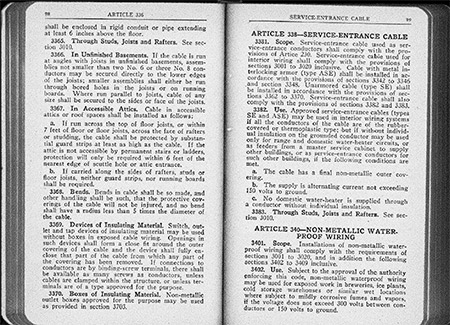
Photo 2. Taken from 1947 NEC. I included this photo to show that as the years go by the electrical industry continues to grow and see changes. The 1947 NEC book measured 6 ¼″ x 4″ x ½″ with 360 pages. In contrast, the 2014 NEC book measures 10 ¾″ x 8 ½″ x 1 ¼″ with 910 pages. Photo by Joseph Wages, Jr.
This input helped to show that the product was being considered and sometimes used in situations where future access was no longer possible. The product had been developed and listed for this purpose. This was something installers and inspectors might be seeing in the field as an acceptable means to make repairs. With a product that is not necessarily new but may not be well known, sometimes there is reluctance for the installer and inspector to accept it in the field. My hope is that as an inspector or as an installer that you would evaluate the situation as presented and use the information found in this article, the NEC, The UL Guide Information for Electrical Equipment (White Book) and the product category code (QAAV) to make an informed decision.
They have been in the Code longer than you might think.
From research into the history of the NEC, one would find that a reference to “approved splicing devices” first appeared in the 1940 NEC. The language was found at 3009 concerning splices and that they needed to be covered with an insulation that was equal to that of the conductor. In the 1947 NEC, the term insulating devices was first mentioned at 3369 for exposed cable wiring. This remained in the following additions of the NEC until the present day; first, as a main rule with either exceptions or list items at the article for Wiring Methods and Materials; and secondly, directing the user of the code to the article concerning Nonmetallic-Sheathed Cables.
Due to the re-arrangement and reorganization of the NEC through the years, the code article in which we find nonmetallic-sheathed cable was not the same in previous issues of the NEC. The main rule requiring the need for splices to be installed in boxes seems to have existed in Chapter 3, Article 300 for many years. The references to nonmetallic-sheathed cable has moved from Chapter 3, 3015 in the 1940 NEC, to Chapter 3, 3369 in the 1947 NEC, to Article 336 in the 1959 NEC, and is at present in Article 334 for the 2014 NEC.
Installation Do’s and Don’ts
As the submitter of Proposal 7-51 for the 2014 NEC stated, “A concealed splice would always seem to be a last result and this change would limit the application to those situations.” This statement would seem to be practical and understandable in light of some of the unforeseen conditions that might arise. A splice is always an opportunity for a loose connection and the need for future repair concerns. Many of the electrical problems encountered can be directly related to a loose connection that may or may not cause other damages to the electrical system.
This information can be obtained from the 2013 UL White Book. An Outline of Investigation was issued in 2001 and is entitled UL Subject 2256. UL has been listing these nonmetallic-sheath cable interconnectors under the product category code QAAV since at least 2001. In looking at this product category code, one can see that some of these items are also present in manufactured buildings, mobile homes and recreational vehicles.
One of the major things to remember about this product is that the device is for “repair” purposes only. If an electrician has the accessibility and availability to replace existing wiring with new wiring, there would be no need for a device such as a nonmetallic-sheathed cable interconnector.
These items have been available for many years. They can be found at any big box, do-it-yourself hardware store in your area. They are a one-time-use item and once locked together are very difficult to separate. In fact, once separated they are not to be reused and must be replaced. The device is stamped with the wording “DO NOT RE-TERMINATE.”
They are robust in their design and have provisions for splicing one or more NM Cable. These are intended for use without an outlet box or an enclosure. The devices have been listed for equivalency to Type NM cable in insulation and temperature rise, and for capability to withstand fault currents, vibration and mechanical shock that may occur. (Reference: Issue 2, 2009, The Code Authority newsletter)
These devices are listed to accept copper conductors only. They are listed for either 12 AWG or 14 AWG nonmetallic cables and are intended for use at 600 volts or less. The product shown in this article is marked for use at 300 volts so look at the product information to verify the intended voltage requirements before using these products. They are also listed to be used with 15- and 20-ampere branch circuits. You will also find the manufacturer’s name or identification as well as the product number on the device.

Photo 3. Nonmetallic sheathed interconnector showing wire termination location. Photo by Joseph Wages, Jr.
The securing of the cables is of concern and after you have made this connection, you know you have been involved in a less than ordinary activity. It requires a lot of time and patience to make an acceptable connection. The individual conductor placement location is etched into the device so that the installer has a visible means to terminate the conductors correctly. Precise measurements must be made to ensure proper termination of each one of the individual conductors.
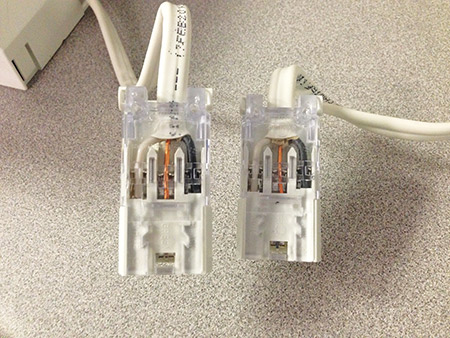
Photo 4. Nonmetallic sheathed connector with Powerbridge product. Photo by Joseph Wages, Jr.
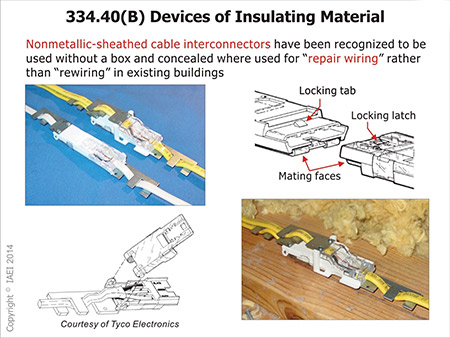
Figure 1. Nonmetallic-sheathed cable interconnectors used without boxes and concealed where used for “repair wiring.”

Photo 5. From IAEI Analysis of Changes, NEC-2014; photo by Keith Lofland.
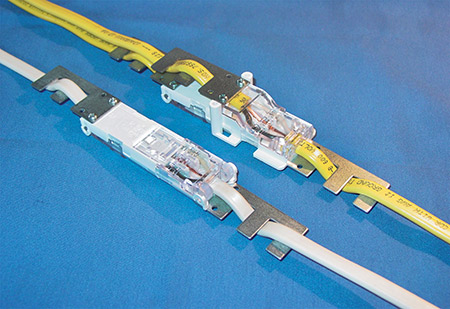
Photo 6. From IAEI Analysis of Changes, NEC-2014; photo by Keith Lofland.
A national manufacturer has marketed a product that allows an installer to easily install a new receptacle outlet on a wall for a flat screen television installation. Their product incorporates a type of nonmetallic-sheathed interconnectors as well as other listed components as part of their listed assembly. This allows the NM cables to be connected in the wall cavity following the instruction requirements of the manufacturer. This new 2014 NEC code language is found at 400.7(A)(11). The language is as follows:
400.7 Uses Permitted.
(A) Uses. Flexible cords and cables shall be used only for the following:
(11) Between an existing receptacle outlet and an inlet, where the inlet provides power to an additional single receptacle outlet. The wiring interconnecting inlet to the single receptacle outlet shall be a Chapter 3 wiring method. The inlet, receptacle outlet, and Chapter 3 wiring method, including the flexible cord and fittings, shall be a listed assembly specific for this application. (2014 NEC)
One of the popular uses of this product revolves around flooding occurrences and the repair of flood damaged nonmetallic cable. The installer and the inspector need to evaluate the damage and determine what amount of cable is no longer useable. The damaged or soaked cable would be removed and the installer could choose to install a nonmetallic-sheathed cable interconnector and new NM cable for the repair of these damaged cables.
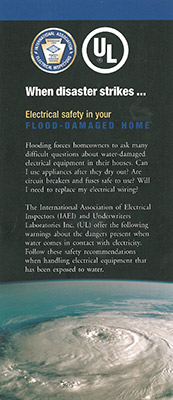
Photo 7. Additional information can be found in a pamphlet produced by IAEI and Underwriters Laboratories entitled When Disaster Strikes… Electrical Safety in your Flood-Damaged Home.
Conclusion
The member that lodged these comments is a seasoned electrical inspector. He is a long-time IAEI member who has served in several leadership positions. It was interesting to find out that code language existed in the NEC addressing this issue that most possibly pre-dates his birth. I’m sure if he had these thoughts and concerns that others throughout the industry may have similar reactions. I hope this article has proved useful in the understanding of the uses of these devices.
Remember, splices should generally be made in a box or enclosure that allows future access to the installer or occupant of the structure. If access to the area allows the replacement of the NM cable, nonmetallic-sheathed cable interconnector devices are not allowed to be used. In instances where repair work is being done, such as after a flood or when NM cable has been damaged due to a screw or nail penetration, they are an acceptable alternative.












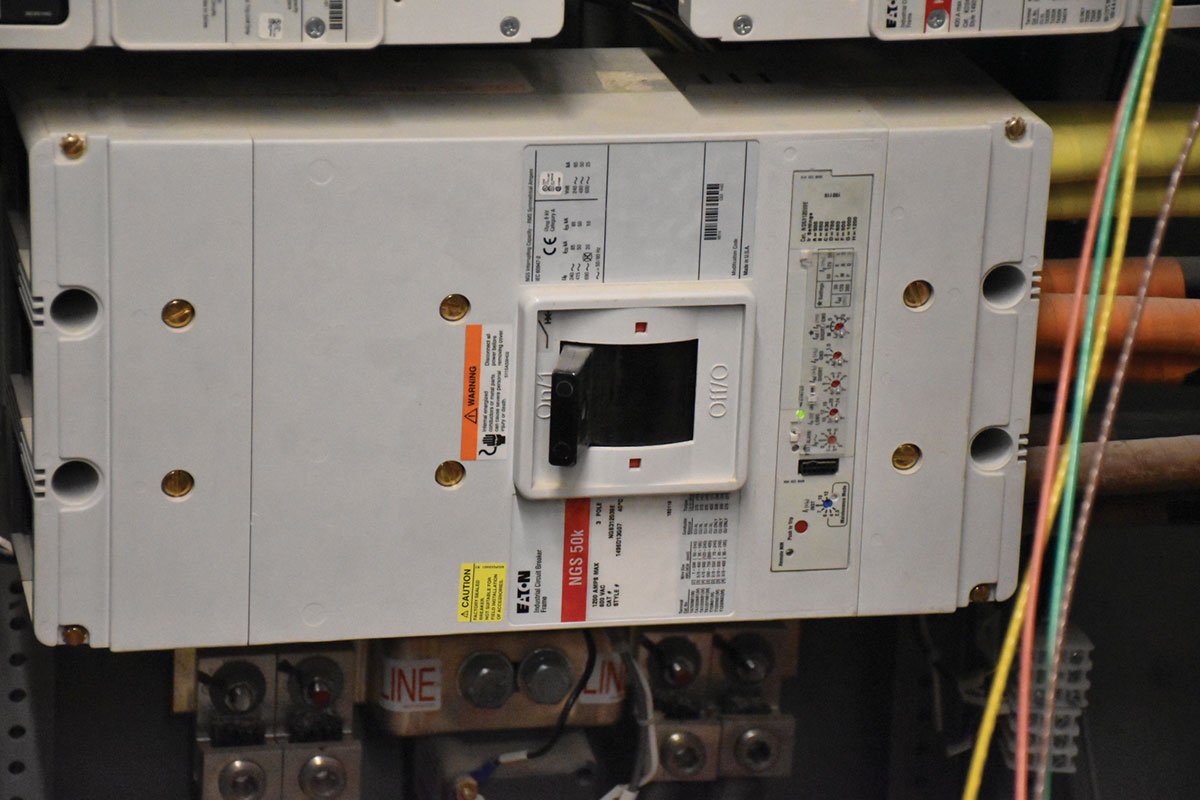
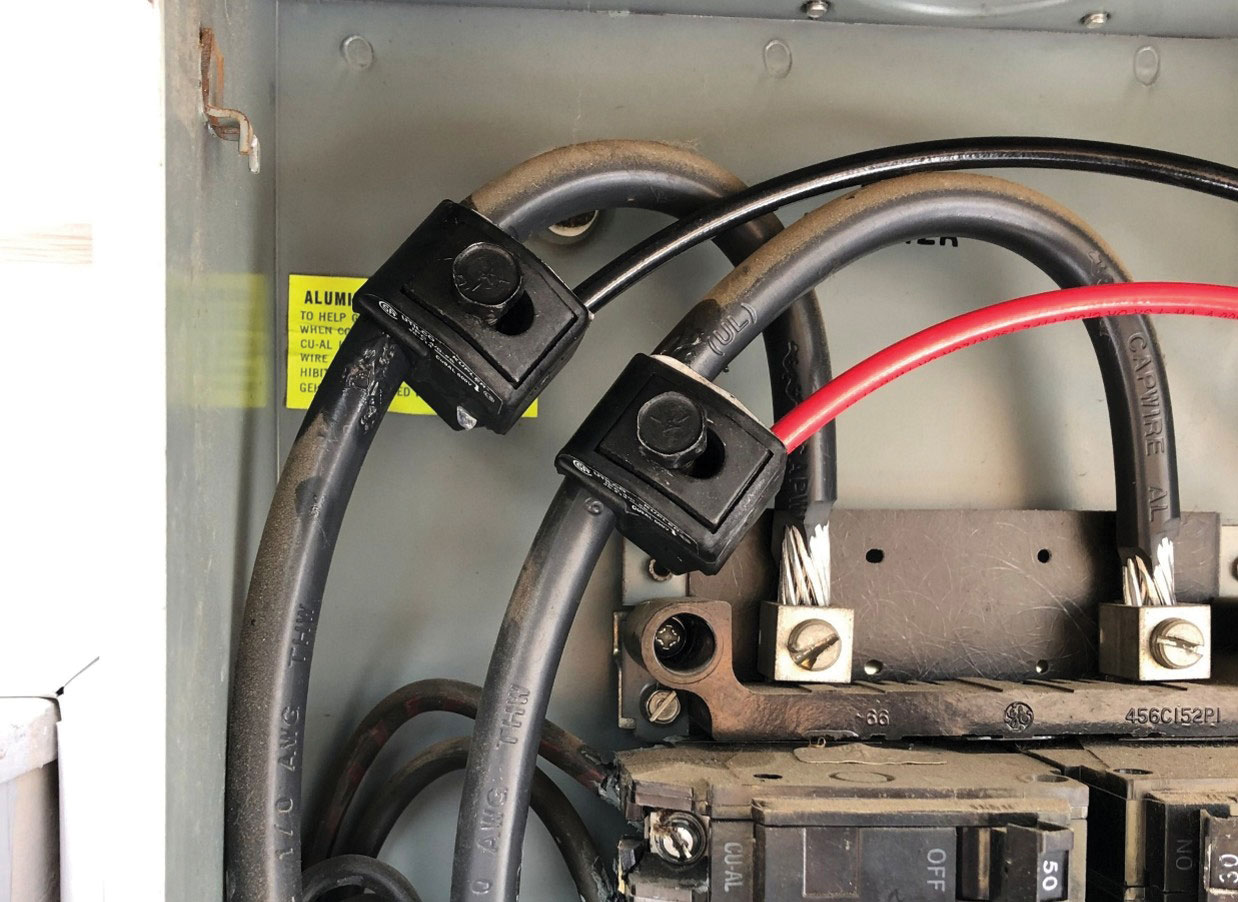
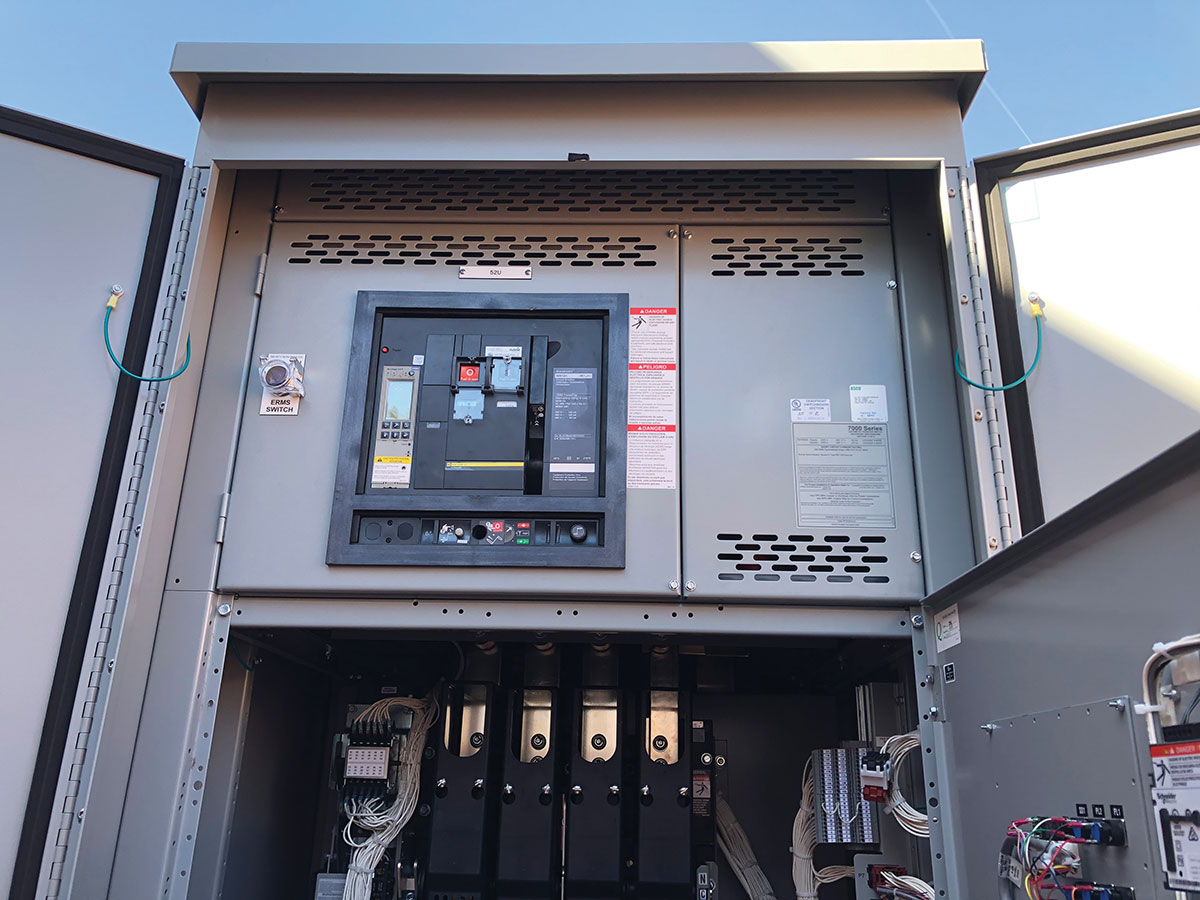
Find Us on Socials